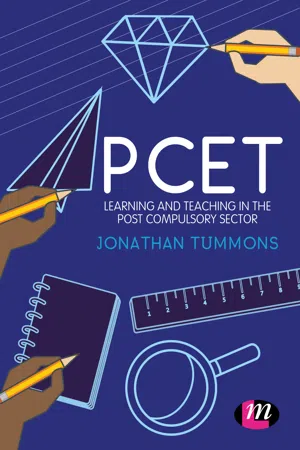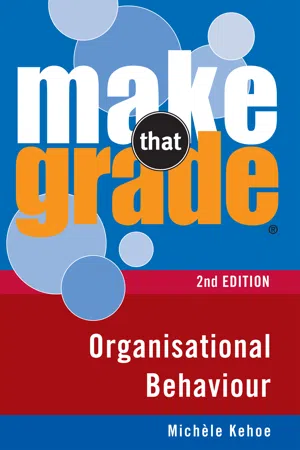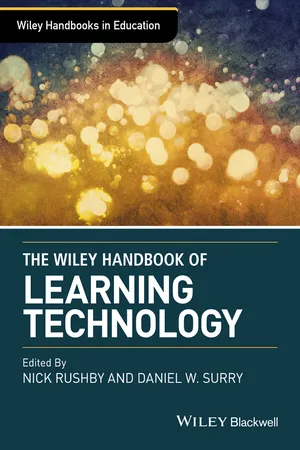Psychology
Learning Methods
Learning methods refer to the various strategies and techniques used to acquire knowledge and skills. These can include formal methods such as lectures and reading, as well as informal methods like observation and trial-and-error. Understanding different learning methods can help individuals and educators optimize the learning process to suit different learning styles and preferences.
Written by Perlego with AI-assistance
Related key terms
Related key terms
1 of 4
Related key terms
1 of 3
6 Key excerpts on "Learning Methods"
- eBook - ePub
PCET
Learning and teaching in the post compulsory sector
- Jonathan Tummons, Jonathan Tummons(Authors)
- 2019(Publication Date)
- Learning Matters(Publisher)
10 It’s all in the mind … or is it? Can an understanding of psychological approaches to learning enhance teaching? Janet LordKey words – learning; approaches; evidence; psychology; behaviourism; constructivism; humanism; neuroscienceIntroduction
This chapter introduces ideas about how people learn and of some of the different processes involved, and of different ways of thinking about these processes. It will consider constructivist, behaviourist, humanist and neuroscientific approaches to learning. The chapter will also discuss how best to use these understandings of learning in further and adult education settings.What are psychological theories of learning?
Psychological theories of learning are theories that explain how individuals learn; they are rooted in psychology. Many psychologists would explain learning as being a relatively permanent change in behaviour. Psychological theories of learning are theories that focus on the individual and the learning processes that the individual engages with or goes through in learning. Such theories comprise an organised set of principles explaining how individuals acquire, retain and recall knowledge.In this chapter we will look at four main theories:- Behaviourism emphasises the role of environmental factors in influencing behaviour. We learn new behaviour in various ways – learning through associating two stimuli or events; or through being reinforced for our behaviours; or by watching, imitating and learning from other people.
- Constructivism states that people construct their own understanding and knowledge of the world, through experiencing things and reflecting on those experiences.
- Humanism sees learning as a personal act to fulfil potential, and that learning is student-centred and personal.
- The neuroscientific approach
- Susan Wallace(Author)
- 2011(Publication Date)
- Learning Matters(Publisher)
It will be useful if, at the outset of this chapter, we take some time to define the terms we shall be using. First of all, for the sake of clarity, let’s draw a distinction between strategy and method. Sometimes, in reading about teaching, you’ll find these terms used interchangeably but it is helpful if we assign them an accurate and specific meaning. Let’s agree for now that, when you divide learners into groups, you are using a strategy: group work. The activity you and they will engage in while they are in those groups is the teaching and learning method. For example, you may divide learners into small groups (strategy) in order for them to engage in a small-group discussion (method), a simulation (method) or a game (method). Or you may plan to have them working as one large group (strategy) in order to engage in the same methods of learning: discussion, simulation, game. This is an important distinction to make because dividing learners into small groups does not in itself constitute a method. It is simply a strategy by which one or another method may be implemented.Similarly, we must be careful to distinguish between a method and a resource. If we plan for learners to watch a video, this is not a method any more than taking material from a textbook is a method. The method will be the briefing that precedes the video (exposition) or the question-and-answer session or discussion that follows it. The video itself is a resource and, like the strategy of dividing learners into small working groups, it is simply a means to enliven, facilitate or inform the learning method you have chosen to use.In some of the discussion that follows, we shall be looking at how our choice of teaching methods will depend, amongst other things, upon our planned learning outcomes. That is, we shall be looking for the method which will best help the learners to learn whatever it is we have planned for them to learn in that lesson. When you read textbooks on education, you will often find that learning is divided into three categories or domains: the cognitive, the psychomotor and the affective. The cognitive domain covers the learning of knowledge, facts and understanding. The psychomotor domain is the learning of practical, physical skills. The affective domain is the area of learning that relates to feelings and attitudes. These are quite useful general categories to use when thinking about our choice of teaching and Learning Methods. They present, however, a rather simplified typology and should not necessarily be accepted uncritically when reflecting in any depth upon your teaching. For example, where would discovery or aesthetic response be accommodated within those three domains? And how would you frame observable outcomes in the affective domain? These are issues you can explore through the further reading listed at the end of the chapter. For the purposes of this chapter, however, we can use these commonly accepted domains as a rule of thumb when planning our methods.- eBook - ePub
- Edgar Stones(Author)
- 2012(Publication Date)
- Routledge(Publisher)
In the volume edited by Arthur Melton we find six categories that were ‘chosen because they seem to represent the categories most commonly employed by investigators in thinking about and doing research on human learning, and have become for this reason part of the tradition of descriptive language of the science of human learning’. The categories were conditioning; rote learning; probability learning; skill learning; concept learning and problem solving. But even these were regarded by Melton as having little usefulness in the scientific analysis of learning; he regarded as more useful the rather large and steadily increasing set of ‘subcategories of these primitive major categories’ whose dissimilarities in terms of process and phenomena were ‘much more striking than the similarities’.A further attempt at the delineation of types of learning was offered in 1965 by Gagné; he proposed eight kinds in the following order of increasing complexity: signal learning, stimulus-response learning, chaining, verbal-association learning, multiple discrimination learning, concept learning, principle learning and problem solving. The basic distinction between one of these forms of learning and another, according to Gagné, lies in its prerequisites, or what the individual must previously have learned. He considers each of his types of learning to depend on certain outcomes from types earlier in his hierarchy.Thus far, I have urged that teaching be made a central concern in educational psychology, that teaching and learning processes are interdependent and that a pluralistic view of the learning process must be adopted. Now I should like to offer a general conception of teaching, to examine some special conceptions of teaching that follow from the general one, and to consider some of the implications of such conceptions of teaching for research and practice.Teaching as the Exertion of Psychological ForceFirst, I propose that we conceive of teaching in general as the exertion of psychological force. Everyone agrees that learning should be defined as a change in capabilities or ways of behaving that may be attributed to experience. The experience must, however, be psychological in character rather than physiological or mechanical. That is, we rule out changes in behaviour due to drugs, fatigue, disease or sensory adaptation, and we also rule out the effects of being mechanically pushed or pulled by something. Psychological experience is hard to define, but surely it includes the effects of stimuli that get into us via sensation and perception and act upon the central nervous system in some way. Without going into these matters, let us merely characterize learning as a fairly stable change in behaviour due to psychological rather than other kinds of forces. - eBook - ePub
- Michele Kehoe(Author)
- 2013(Publication Date)
- Gill Books(Publisher)
4LEARNINGObjectives This chapter will help you to:- Understand the nature of learning.
- Describe the behaviourist approach to learning.
- Explain the cognitive approach to learning.
- Identify social learning theory.
- Describe the structure of human memory.
- Apply methods of improving memory.
Learning occurs at all levels of the organisation – individual, group and the organisation itself. It is fundamental to the success of an organisation that an understanding is gained of how and why individuals learn and of how the organisation can facilitate continuous learning. Learning theories provide an insight into individual differences and management practices. This knowledge affects the design and delivery of induction and job training programmes, the design of reward systems and the provision of feedback to employees. It contributes to the successful management of organisational change and the creation of learning organisations.According to Buchanan and Huczynski (2010), ‘learning is the process of acquiring knowledge through experience which leads to a lasting change in behaviour’.Moorhead and Griffin (2012) state that learning can be defined as ‘a relatively permanent change in behaviour or behavioural potential resulting from direct or indirect experience’.The main characteristics of learning include:- Learning involves change – This may affect the way individuals think, feel and behave. People may or may not be aware of these changes.
- Change may be positive or negative
- eBook - ePub
- Juani Swart, Clare Mann, Steve Brown, Alan Price(Authors)
- 2012(Publication Date)
- Routledge(Publisher)
Chapter 9 Learning and Development Methods, Interventions and Practices IntroductionThe choice and effectiveness of Learning Methods are influenced by a variety of factors. To understand these, we need to ask some basic questions about the purpose of learning in specific circumstances. For example, is training the best means of bridging the gap between current and desirable performance? Have the desired outcomes been defined? Is the level of training appropriate for the trainees? Do learners understand the purpose of the learning method and content, and how it relates to their work? Does the environment into which trainees return facilitate transfer of their learning?Many methods support successful changes, including open and self-managed learning. At a group and individual level, many methods exist to facilitate planning learning opportunities. However, questions will arise regarding the effectiveness of any training intervention. Even if these aspects have been addressed properly, it does not mean that the planned learning opportunities will be effective. Appropriate methods of training must also be selected to gain the maximum benefits from any training event. For example, role-plays and videos can be used for interviewing techniques or appraisal training, whereas some forms of learning (such as first-aid training) may require a practical demonstration.The first section of this chapter looks more specifically at actual methods used for groups and individuals, largely focusing on planned learning and training events. However, it should be remembered that informal learning in the workplace remains an important factor in developing individual performance. In the second section we will move on to consider open learning, the use of visual aids and some of the limited empirical evidence available on the use of specific Learning Methods. - eBook - ePub
- Nick Rushby, Dan Surry, Nick Rushby, Dan Surry(Authors)
- 2016(Publication Date)
- Wiley-Blackwell(Publisher)
In general, teachers think about technology the same way they think about other teaching methods and tools (Inan and Lowther 2010; Zhao and Cziko 2001). As documented by numerous researchers (e.g., Ertmer et al. 2012; Tondeur, van Braak, and Valcke 2007), teachers tend to use technology in ways that are consistent with their personal beliefs/theories about curriculum and instructional practice. As might be expected, then, teachers with different types of beliefs (i.e., student-centered vs teacher-centered) typically will use technology in different ways. For example, one teacher may ask students to use spreadsheet software to make calculations and run statistical tests, while another may have students use the same software to run “what-if” scenarios, manipulating different variables to determine changes in outcomes, as well as to predict new outcomes based on new manipulations. Thus, although different technologies may afford different opportunities for learning, it is the teacher who determines which affordances will be capitalized on during instruction. And, as noted earlier, these decisions tend to be based on underlying beliefs about teaching and learning (Fives and Buehl 2012; Kagan 1992).4.4 Three Views on Learning
According to Mayer (2003), educational psychology, over its 100-year history, has devised three main views on how students learn: learning as response strengthening, learning as knowledge acquisition, and learning as knowledge construction. These three views on learning are often labeled, respectively, behaviorism, cognitive information processing (CIP), and constructivism (Ertmer and Newby 1993, 2013). Each of these theories proposes its own definition of what it means to learn, which, in turn, has implications for instructional practice, including the roles that teachers, students, and technology play in the classroom (see Table 4.1
Index pages curate the most relevant extracts from our library of academic textbooks. They’ve been created using an in-house natural language model (NLM), each adding context and meaning to key research topics.
Explore more topic indexes
Explore more topic indexes
1 of 6
Explore more topic indexes
1 of 4





